Pictures from SRF, with a Little History
A brief overview of the SRF group history was included in the October'97 issue of the internal CESR web magazine
LabWindow
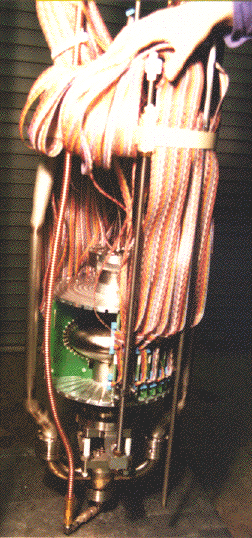
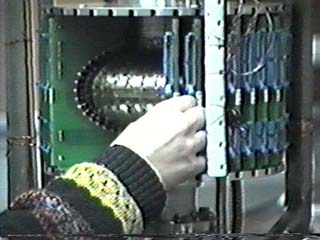 Advanced Thermometry Studies of Superconducting RF Cavities
Advanced Thermometry Studies of Superconducting RF Cavities
One of extremely succesful schemes in the study of cavity losses has been thermometry. The generic setup consists of an array of thermometers placed on the exterior surface of the cavity. The system developed at Cornell for L band cavities improves significantly on previous designs in two important categories: speed and sensitivity. It is able to acquire temperature maps in less than 0.2 s while still resolving signals at the 150 microkelvin level. Both of these features have been critical in study of low level losses and transient behavior.
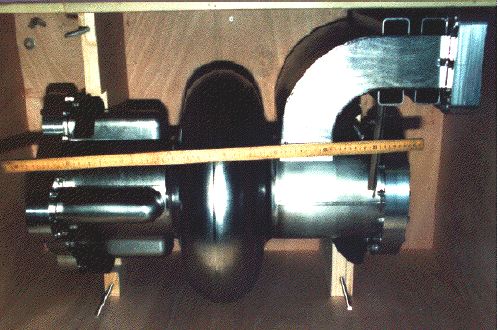 B-cell 500 MHz Cavity
B-cell 500 MHz Cavity
The B-cell cavity is used for the CESR III high luminosity upgrade. Four such cavities will be eventually installed in the machine. The cavity is specially designed to provide sufficient acceleration, while presenting as little impedance to the beam as possible. The fluted beam tube (to the left in the photo) allows coupling out of the two lowest frequency higher order modes (HOMs), making this essentially a single mode cavity.
 Nine-cell 3 GHz Cavity
Nine-cell 3 GHz Cavity
The initial High Peak Power RF Processing Studies (HPP) were performed at 3 GHz, with power levels up to 200 kilowatts. These experiments used single-cell, two-cell, and nine-cell cavities. The two-cell cavity reached a CW peak electric field of 100 megavolts per meter following HPP processing. The single cell cavities were dissected following cold tests in order to investigate the microscopic effect of HPP.
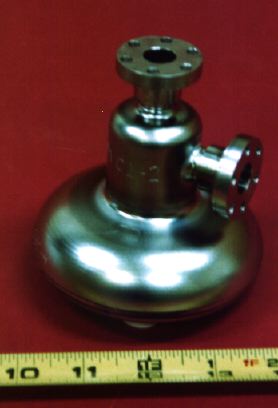 The Mushroom Cavity.
The Mushroom Cavity.
The Mushroom Cavity is a single-cell 3 GHz cavity which has essentially been cut in half along the equator region, with a base plate replacing the other half cell. The cavity operates at approximately 6 GHz, and has an enhanced surface electric field in the center of the baseplate. This cavity reached a CW peak surface field of 140 MV/m. A second version of this cavity, which was fitted with a de-mountable baseplate was used extensively in investigations of RF surfaces following exposure to high surface electric fields.
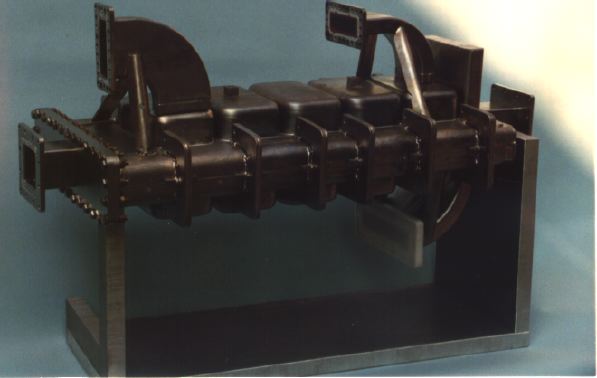 The Muffin Tin Cavity.
The Muffin Tin Cavity.
One of the earliest cavities used in SRF research at Cornell. The wide central section was designed to minimize heating problems due to synchrotron radiation. The muffin tin cavities were successfully tested in CESR, but eventually abandoned in favor of the spherical and elliptical cavities which eliminated the problem of multipacting.

